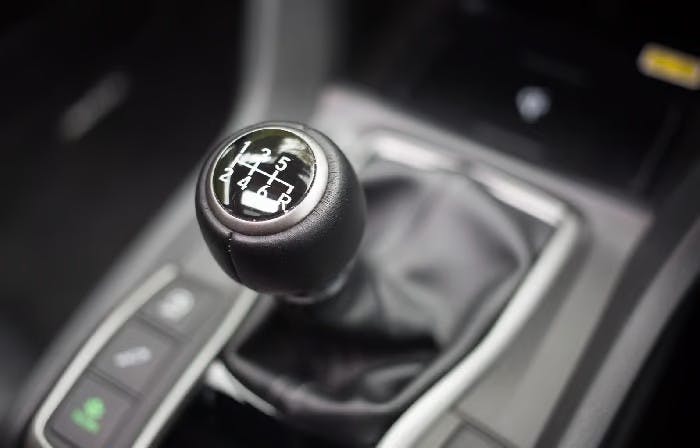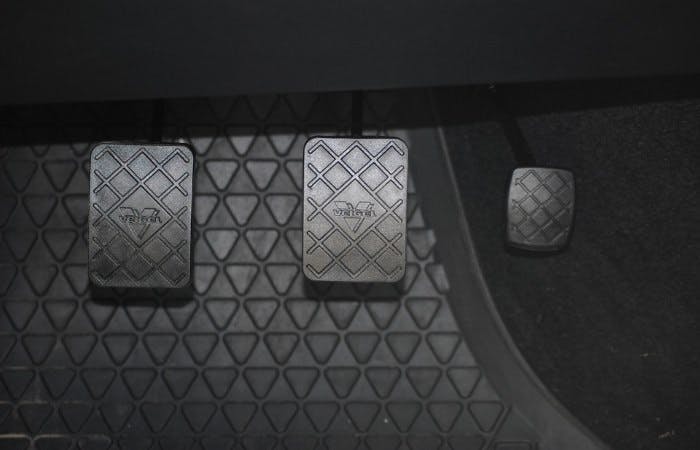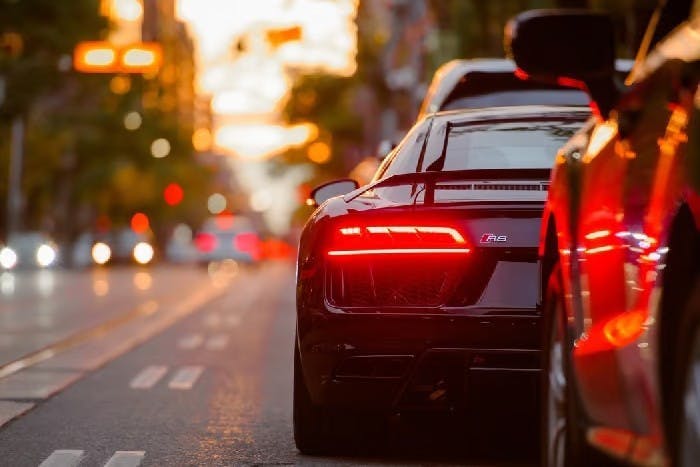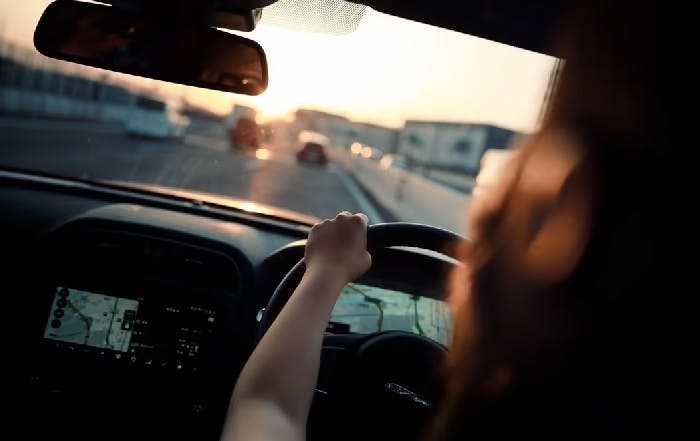
If you've racked up more than a few hours behind the wheel of a car, chances are you've experienced stalling. That dreaded thwak! of the engine cutting out on you and the car suddenly shutting off. Depending on where you are and who you're with, it's an error that can leave us red faced and praying the earth would just swallow us up. Waa!
In reality, though, stalling really isn't that big of a deal. Everyone from learner drivers to seasoned boy racers will stall their car once in a while. So, to soften the blow of stalling, we've put together this handy little guide to explain exactly what stalling is and how you can reduce the chances of it happening. Let's get stuck in!
What is stalling?
Stalling can actually refer to a number of issues that cause a car's engine to die. For the purpose of this article, though, we're sticking to the most common form of stalling—that which occurs when the clutch on a manual car is not released correctly.
To understand stalling, you need to have a good grasp of how the clutch actually works. The clutch pedal allows you to connect the gearbox of a car to its engine. When the clutch pedal is raised, the clutch plate and engine plate are engaged.
One of the most important lessons you learn when getting to grips with driving is how to find the biting point. This is the name for the moment when the two plates meet. Eventually you will be able to feel when this happens, but you can also tell by listening for a change in the sound that the engine makes. Stalling occurs when the clutch (and, to a certain extent, the accelerator) is not operated properly.
What causes a car to stall?

While your car is running and the two plates are connected, they require the same rate of revolutions per minute, or RPM (which you control by selecting the correct gear) to keep the engine going. If this is not sustained, the car will stall, causing the engine to cut out. Similarly, releasing the clutch too quickly causes the plates to slam together, which will also result in a stall.
Side note: automatic transmissions
It is a common misconception that it is impossible to stall an automatic car. While it happens much less frequently, it is not unheard of. Automatic transmissions use what is called a torque converter, which controls transition fluid and ensures the engine stays running while you're driving. The correct gears are chosen for you, so you have no need for a clutch pedal.
The engine of an automatic vehicle will stall, though, if the torque converter fails. Obviously this is a mechanical issue, however, and is not usually the fault of the driver.
Common stalling scenarios
Stopping and starting

When you think about stalling, often the scenario that comes to mind is that where you're sat waiting for a red light to change with a long line of traffic queued up behind you. It's rush hour, everyone's tired after a long day at work, and people just want to get home as soon as possible. As the seconds tick by, the pressure on you builds and once that green light appears you try to launch the car forward.
Bam! The engine cuts out and the fear sets in. What you've likely done here is raised the clutch too quickly in your eagerness to set off. As a result, the plates collide too harshly to be able to get in sync. Some beginners even forget to engage the clutch at all when stopping or setting off, which is a foolproof way of guaranteeing a stall!
Hill starts
The process of correctly engaging the clutch can be particularly excruciating when you're forced to stop and start on a hill. Reaching the biting point requires more acceleration because the car needs enough oomph to propel it up the hill. If this isn't provided, the engine doesn't have enough revs and cuts out.
Hills are also a sticky area because, while we usually recommend working the clutch with care to prevent a stall, raising it too slowly in combination with an inadequate amount of acceleration will cause the car to roll backwards. You need to find the perfect middle ground between too slow and too fast, or the consequences can be dire!
Driving at slow speeds

As we've mentioned, some instances of stalling are linked to a driver not being in the correct gear. More specifically, driving in a gear that is too high for the speed you are travelling will cause the engine to die.
So, when driving very slowly (for example, when performing a manoeuvre) make sure you're in first gear. For those times when the car is just barely rolling forward, you might even need to keep the clutch slightly depressed to avoid stalling. You should to be extra precise when changing gear, as even accidentally sliding into neutral can cause the car to stall if you are moving at a slow pace.
What should you do if the car stalls?

The first thing to remember is to keep cool. Yes, the sense of shame is hard to shake, but get on with fixing it and the moment won't last very long! Ignore those people beeping or shaking their heads—we guarantee you they have been in the same situation before.
Try to think of a stall as a quick reset. As soon as the engine cuts out, put the handbrake on for safety. Then it's simply a case of starting up the car as you would normally. Put the vehicle in neutral, turn on the engine, depress the clutch, select first gear, check your mirrors and blind spot and set off again when it is safe to do so.
It is imperative that you properly observe your surroundings before you carry on driving. Even if the car has only stopped for a matter of seconds, what's happening on the rest of the road is always changing. New cars may have appeared, pedestrians could be crossing the road ahead and the lights may have changed to red. Even though you're probably itching to get moving, safety is a priority. Stay calm and carry out the process smoothly.
How can you avoid stalling?

While it's true that even experienced drivers will stall once in a blue moon, there are certain precautions newly-qualified drivers can take to keep their stall count to a minimum.
Recognise what your clutch feels like when it is at biting point. Practice really does make perfect with this one. The more you drive a particular car, the more attuned you'll be to its mechanisms. There is a brief moment, you see, when you can sense a stall coming and prevent it from happening—either by increasing acceleration or depressing the clutch a little more. Obviously when doing this you need to be keeping an eye on the traffic around you!
Know when to lower the handbrake. As soon as the clutch reaches biting point, keep a steady pressure on the accelerator and take off the handbrake, slowly raising the clutch as you do so. Timing the clutch with your handbrake like this is a great way to keep everything in sync.
Don't rely on revving the engine extra hard when setting off as a way to prevent stalling. While you might find that it works (as long as you don't raise the clutch too quickly) it isn't great driving practice. Overdoing the gas pedal wastes fuel and there's a risk that you will lurch forward too quickly. Press the accelerator gently until you reach around 1500 revs and then start to raise the clutch.
Will you fail the driving test if you stall?
Ahhh, the million dollar question. If we had a pound for every time a learner asked us this! We would have, well… a million pounds. You see, out there in the vast abyss that is the internet, there is a lot of contrasting information on this question. So, let's put things straight once and for all!
Stalling during the driving test does not necessarily equal a fail. As with many things in the driving world, however, it all depends on the situation. If the engine of the car cuts out, the examiner will be observing how you deal with it and how it affects other road users.
As long as you deal with it safely (stay calm, correct observations, restart smoothly, etc.) and it does not pose a hazard to other drivers or pedestrians, you'll probably get a minor fault at most. If, on the other hand, you move off without checking if the road is clear or stall the car more than once, you will earn a fault. Again, whether it is a minor or major one depends on the specific scenario.
Stalling: The verdict
Don't get too down on yourself if you stall the car—it's not the end of the world! Breathe, go through the appropriate steps listed above and move on.
We could all do with being a little nicer when other people stall on the road, too! Next time it happens to someone ahead of you, think about how bad you feel in that scenario. Getting angry only makes the situation worse! Put up with the extra few seconds it adds to your journey and you'll be earning some good road karma.
Subscribe for driving advice, offers & more
We'd love to let you know about our courses, news and offers via email. You may unsubscribe at any time.
Star Genie Limited trading as PassMeFast. Company number 10093359
Copyright © 2024 owned by Star Genie Limited
PassMeFast, Blue Tower, MediaCityUK, Salford, M50 2ST

